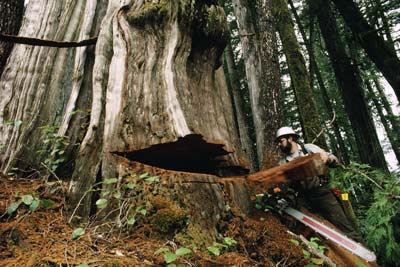Logging is the cutting, skidding, on-site processing, and loading of trees or logs onto trucks. Proper forest management involves balancing the economics of the harvest with the biology and ecology of the forest. Once these strategic issues are determined, Keller Logging can survey your timberlands to locate and estimate the volumes and grades of standing timber that will generate the most revenue. This process is called "cruising".
Next comes felling, or cutting down trees. To fell a tree, a worker makes four cuts: a top, bottom, back and felling cut. The goal is to leave a sufficient hinge of wood between the bottom cut and felling cut. This reduces tree kickback and provides greater control over where the tree will fall. When a team of loggers is working together, the tree faller usually shouts that "Timber!" warning that you're familiar with to alert fellow workers that a tree is about to fall.
Once a tree is on the ground, loggers remove its limbs and cut it into logs, a process known as bucking. Bucking involves making cross-sectional cuts, from the butt of the tree to the top.
Next comes skidding, or moving logs from the forest to the landing area. Loggers skid timber by winching several logs to a tractor and dragging them through the forest along designated trails. Preplanned skid trails protect the forest floor by limiting soil compaction, which increases the soil's ability to grow trees in the future.
Published 6/19/2014
